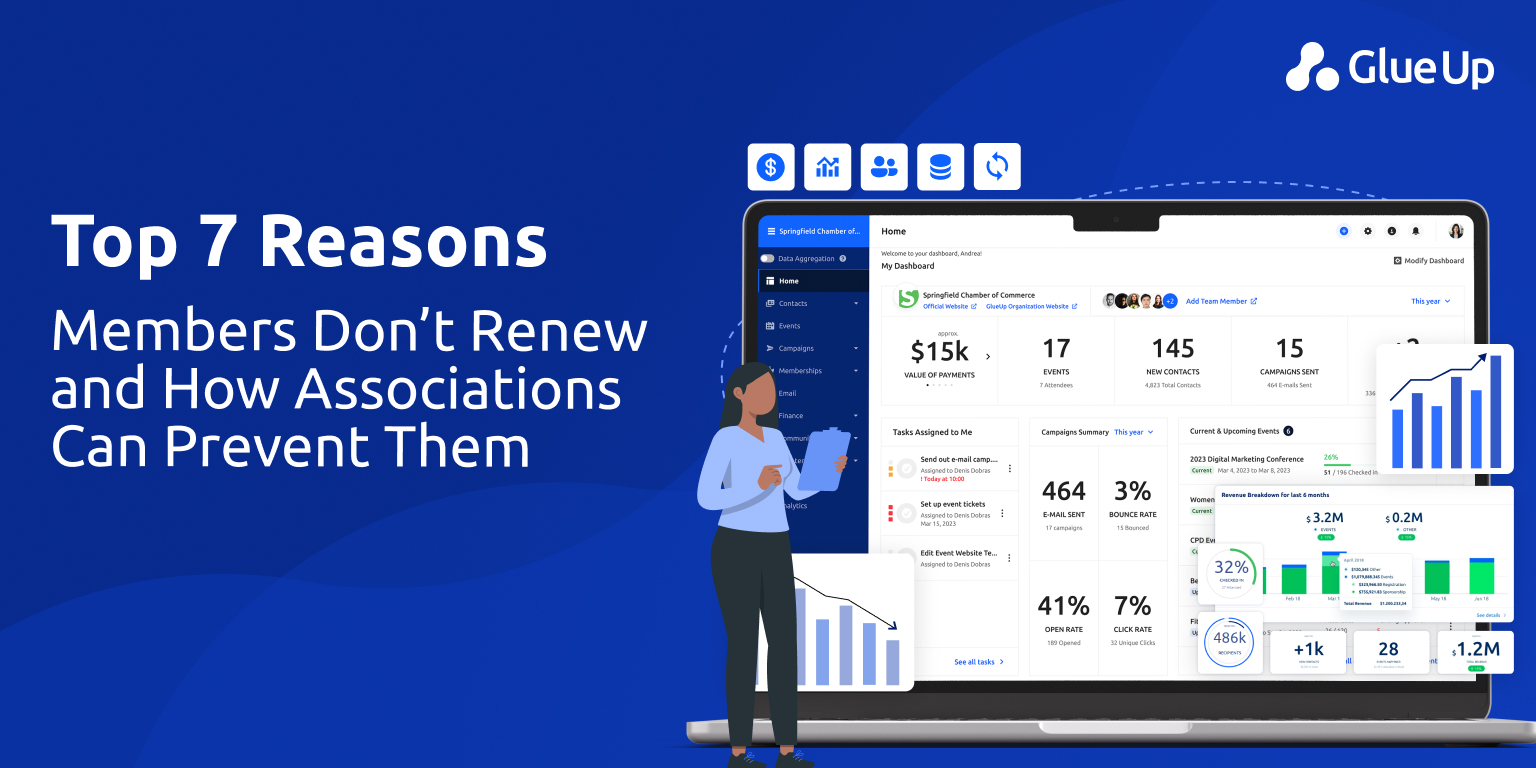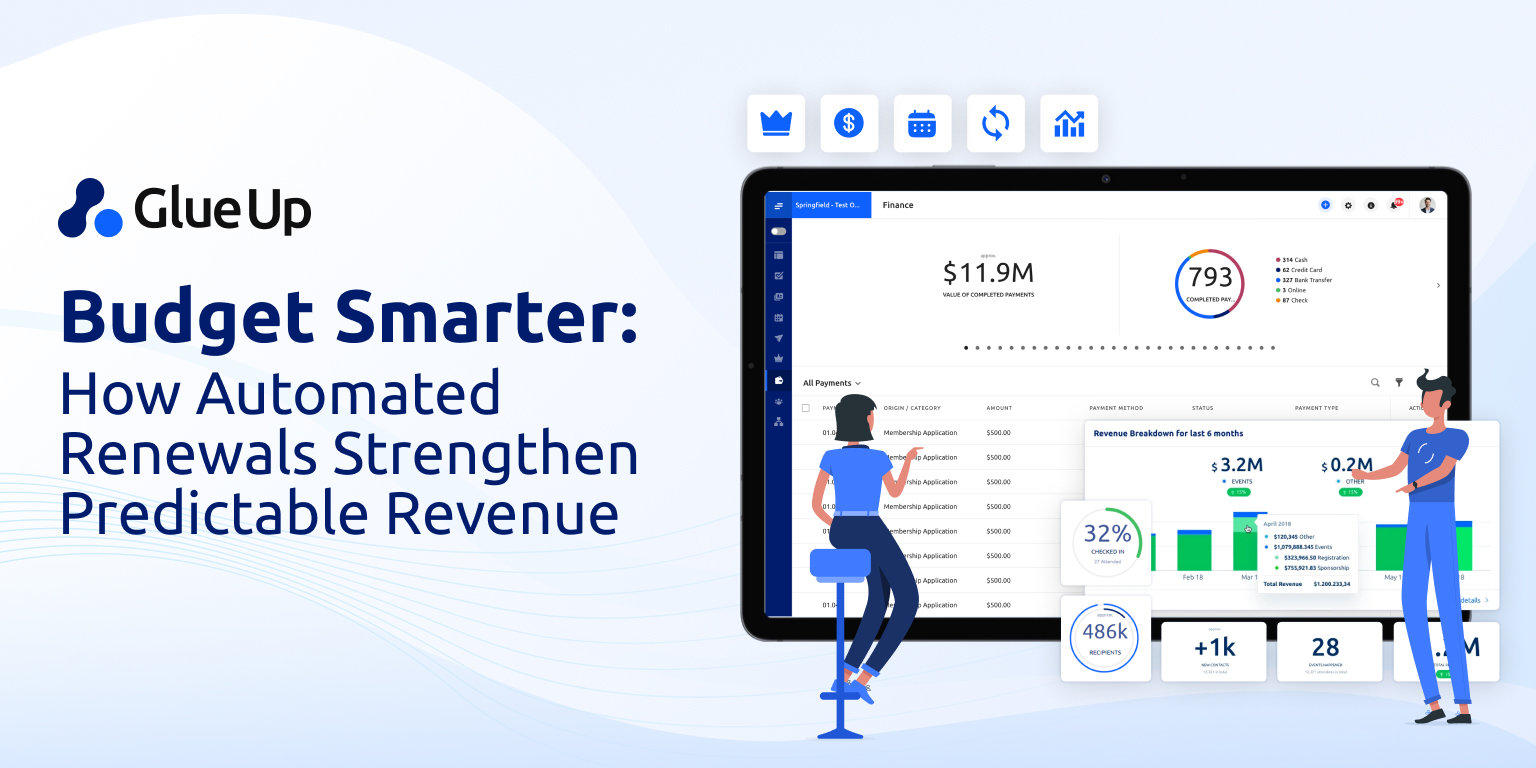![8 Innovative Member Loyalty Programs and Ideas to Boost Retention [with Pros, Cons, and Examples] 8 Innovative Member Loyalty Programs and Ideas to Boost Retention [with Pros, Cons, and Examples]](/sites/default/files/2023-03/member%20loyalty%20programs.webp)
Loyalty programs are not new. They have come a long way in increasing members' loyalty and engagement, improving their retention, and generating a consistent revenue stream.
But with dozens of programs available, how can you choose the best one to meet the needs of your organization while keeping your members at the center? A tier-based program? Points reward? or referrals?
Let’s take a look at some of the most powerful member loyalty programs, their pros and cons, and where they are most effective.
But first……
What is a Member Loyalty Program and How Does it Work?
Simply put, a member loyalty program rewards members in exchange for interacting with your organization. This includes participating in your activities, referring someone they know, or getting involved in the community.
The program typically involves offering rewards, such as discounts, exclusive offers, or freebies, to members who regularly engage with your organization. Your members can redeem their rewards through your website or mobile app, or by visiting a physical location.
A member loyalty program helps you increase retention, boost engagement, and foster loyalty among your members. Meanwhile, your members can benefit from the program by receiving discounts and other rewards for their loyalty.
Loyalty Program #1 - Points-Based Rewards
Best for: Increasing member engagement
This is the easiest and most engaging loyalty program, especially if you have a mobile app.
A points-based reward system allows your members to accumulate points based on their level of engagement with the organization, which they can then redeem for rewards, discounts, or exclusive experiences.
Your members can earn points for each purchase or action taken, such as signing up for a newsletter or referring a friend. The more points they earn, the greater the reward they can receive.
You can also reward them for their feedback on new services and programs or offer ideas to improve them. This way, you’ll get honest input from your members, while at the same time, their participation will earn them points.
Pros
- Easy to understand and use.
- Enhances competitiveness by allowing easy adjustment of earning thresholds and rewards.
- Helps you a great deal in collecting member data for upselling, or targeted promotions.
Cons
- To redeem for a reward, thousands of points must be earned. This, sometimes causes the points programs to lose value.
- It requires you to manage the program ongoingly based on the community of users in order to reduce program fatigue.
- Requires a fair amount of upfront investment.
Loyalty Program #2 - Tiered Membership Programs
Best for: Organizations with multiple tiers
A tiered membership program rewards members with increasingly valuable perks and benefits as they move up through various membership tiers.
Members who enroll in this type of rewards program earn basic perks just for joining. However, they can move up tiers if they meet certain criteria, such as spending money or earning points. This encourages them to either engage more or advance their tiers in order to unlock more valuable rewards.
Tiered member loyalty programs can be effective at building member loyalty and increasing their lifetime value, as they offer a tangible incentive to remain loyal for the long run.
Pros
- Ensure that your most loyal (high-value) customers are well rewarded.
- You can easily customize your program to make it unique.
- Keeps members motivated to reach higher tiers.
Cons
- A less motivating experience for new customers.
- High rewards may seem unattainable to some, creating an entry barrier.
Example - Anytime Fitness Rewards Loyalty with Points

By using a point-based reward system, Anytime Fitness aims to incentivize its members to engage more frequently with the gym and to establish a sense of loyalty and community among its membership base.
The program rewards members with points for various activities, such as checking in at the gym, referring friends, and completing fitness challenges. The program also offers tiered membership levels, with higher tiers offering greater rewards and perks.
Members can then redeem their points for various rewards, such as free personal training sessions, discounts on supplements, and branded merchandise.
Loyalty Program # 3 - Include Gamification
Best for: Associations with tech-savvy/ young members
Programs with gamification technology add an element of fun to member engagement by incorporating game-like elements such as challenges, badges, and leaderboards.
Although it is more like a point-based reward, members earn badges or other achievements for completing certain activities or reaching certain milestones. For example, a member might earn a "social butterfly" badge for attending a certain number of club events.
It also has a leaderboard that is used to display the top members in terms of points or other metrics. This can create friendly competition among members and motivate them to increase their engagement with the club.
Pros
- Easily customizable.
- Adding fun elements to the program makes it more participatory.
Cons
- Not for inexperienced technophobes.
- Could get tricky if the interface is not designed properly.
Example - NSCS’s Gamified Loyalty Program

The National Society of Collegiate Scholars (NSCS) is a non-profit organization that recognizes and elevates high-achieving students.
They have a gamified loyalty program called the Member Benefits Program, where members can earn points for participating in various activities such as attending events, volunteering, and completing surveys. They can then redeem their points for scholarship awards, discounts, and merchandise from the NSCS.
The program aims to incentivize and engage members while promoting the values of the organization.
Loyalty Program # 4 - Leveraging Social Platforms
Best for: New organizations looking forward to increasing their visibility and reach
Social media is the best platform for attracting new members and engaging existing ones. Why not include it in your loyalty program to make the most of it?
Social-media-based loyalty program encourages your members to share their experiences with the organization on social media in exchange for rewards, recognition, and exclusive content.
The purpose of a social-media loyalty program is to increase member engagement and loyalty by providing them with additional value for their participation in social media activities related to the organization.
Your members can earn points or badges for posting about the organization, sharing its content, or engaging with other members on social media.
Pros
- Motivate members to engage more frequently with an organization's social media accounts, such as liking, commenting, sharing, and creating user-generated content, which ultimately increases brand awareness.
- One of the best ways to drive membership.
Cons
- The program may not be effective in attracting new members who are not yet aware of the organization's existence or value proposition.
Example - Crunch Fitness keeps its members motivated through social media contests

Crunch Fitness is a fitness club that offers members the chance to win prizes by posting workout photos and videos on Instagram using the hashtag #CrunchChallenge. The club rewards its members with money, personal training sessions, and gym apparel.
Loyalty Program # 5 - Value-Based Rewards
Best for: Non-profit organizations
If you have members who are keen on contributing to society, then value-based rewards are the ideal loyalty program for you.
Instead of financial incentives, the program gives your members value because they feel proud that the rewards they earn are helping others. You can offer your members a variety of charities to choose from that genuinely align with their values.
Overall, a value-based loyalty program helps you connect with your members on a deeper level as well as shows your commitment to giving back to the community.
Pros
- Helps you in creating a positive brand image and positive member loyalty.
Cons
- It can be challenging to measure the impact of charity-based loyalty programs on the charitable cause being supported.
- Charity-based loyalty programs may not appeal to all customers, particularly those who are more motivated by tangible rewards such as discounts or free products.
Example - National Association of Realtors gives back to the community

National Association of Realtors (NAR) is a trade association for real estate professionals in the United States, and its "Realtor Benefits" program offers exclusive discounts and rewards to members.
As part of this program, a percentage of the revenue generated from member purchases is donated to the Realtors Relief Foundation, which provides assistance to victims of disasters.
Loyalty Program # 6 - Subscription-Based Programs
Best for: Generate predictable revenue streams
Subscription-based loyalty programs offer special benefits and rewards to members in exchange for recurring fees. These benefits can include things like discounts on partner products or services, exclusive access to sales or events, early access to new products or services, free shipping, and more.
This program motivates members to stay loyal to your organization by continuing to pay the subscription fee. You can also reward them with additional benefits or rewards based on their level of membership or the length of time they have been subscribed.
Pros
- Increases member engagement as they are more likely to use the benefits and rewards they receive as they have paid for.
Cons
- Have a higher churn rate because members cancel their subscriptions if they do not see enough value in the benefits and rewards they receive.
Loyalty Program # 7 - Referral Programs
This type of program incentivizes members to refer friends and family to the organization in exchange for rewards, discounts, or exclusive perks. These incentives serve as a motivator for members to actively promote your organization to others, resulting in increased brand awareness for the company.
Pros
- A cost-effective way to acquire new members.
- Have high conversion rates because new customers are referred by someone who they trust.
Cons
- Limited in their reach because they rely on existing customers to refer new customers.
- Heavily rely on incentives such as discounts, cashback, or free products to incentivize members to refer new customers.
Example - American Water Works Association (AWWA) rewards referrals

American Water Works Association (AWWA) offers incentives to members who refer colleagues. They offer rewards for each person that joins their association through referrals.
Loyalty Program # 8 - Promote Community Involvement
Best for: Fostering a shared sense of identity among members
Community-based loyalty programs are rewards programs that are designed to incentivize and retain members by building a sense of community around your organization. In addition to rewards, this program helps like-minded members to connect, share ideas, and collaborate with one another.
Unlike other loyalty programs that focus on individual incentives, community-based programs reward people collectively. This can be achieved through online forums, social media groups, or in-person events where your members can interact and engage with each other.
Pros
- Create brand advocates who are more likely to refer new members to your association.
- Less expensive to implement than traditional loyalty programs that involve individual rewards and discounts.
Cons
- May not be appealing to all members, especially those who do not share the same values or interests.
- Creates a sense of exclusivity that could alienate members who are not actively involved with the community.
Example - Rotary International Fosters Rewards Community Involvement

Rotary International is a global network of community volunteers that work together to create positive change through various service projects. Rotary clubs have numerous programs that offer rewards and recognition to members who participate in community service activities and projects.
Now that you have a list of the most effective member loyalty programs, you can choose the best one that suits your member base. Or you can combine two or three of them and make a hybrid program.
If you are thinking about implementing and automating some of these programs, contact our team today and find out how we can automate and personalize the process to ensure that your members remain loyal to your organization for years to come.



